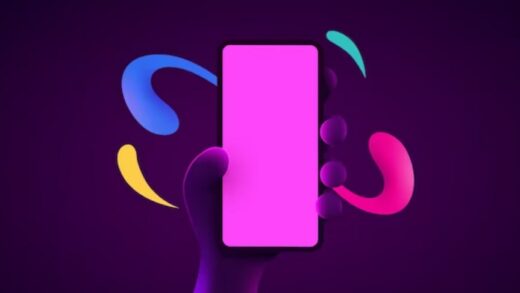In the ever-evolving landscape of communication, graphic design no longer sits on the periphery as a mere artistic endeavor. It’s been catapulted to the forefront by the digital revolution, morphing into an essential cornerstone that gives businesses the power to articulate their brand narratives and seize a competitive edge. An industry in rapid flux, graphic design has witnessed an explosive surge in demand, making the mastery of its intricacies a sought-after commodity. A degree in this field is not just an academic accomplishment—it’s a golden ticket to a plethora of financially rewarding career trajectories. Let’s unpack some of the potentially prosperous positions you might find yourself in.
UX/UI Designer
UX/UI Designers have a crucial role in the digital world, as they bridge the gap between the user’s needs and the technology’s capabilities. They focus on making applications and websites not only functional and efficient but also aesthetically pleasing and intuitive to use.
Here is a list of key responsibilities:
- Understanding and defining user requirements;
- Developing and conceptualizing a comprehensive UI/UX design strategy for the brand;
- Producing high-quality UX design solutions through wireframes, visual and graphic designs, flow diagrams, storyboards, site maps, and prototypes;
- Designing UI elements and tools such as navigation menus, search boxes, tabs, and widgets for digital assets;
- Testing UI elements such as CTAs, banners, page layouts, page designs, page flows, and target links for landing pages;
- Gathering and evaluating user requirements in collaboration with product managers and engineers.
Salary Expectations
The median annual salary for a UX/UI designer can vary greatly depending on the level of experience, the size of the company, and the geographical location. However, as of 2023, the median salary range is between $89,000 and $114,000.
| Experience Level | Salary Range |
|---|---|
| Entry-Level | $61,000-$75,000 |
| Mid-Level | $76,000-$110,000 |
| Senior Level | $111,000-$150,000 |
Career Path
UX/UI Designers often come from various backgrounds, including graphic design, software engineering, and marketing. Many possess a degree in fields such as computer science, web design, or related areas, but a degree isn’t always necessary. A strong portfolio showcasing a good understanding of UX/UI principles can sometimes outweigh academic qualifications.
Educational Background
Here’s a table illustrating some common educational backgrounds:
| Degree | Details |
|---|---|
| Computer Science | Provides a strong foundation in programming and software development |
| Web Design | Covers all aspects of creating a website, including aesthetics, layout, and function |
| Graphic Design | Offers a broad understanding of visual communication and design principles |
Experience & Skills
In addition to their academic qualifications, UX/UI designers also typically possess a range of relevant skills:
- User-Centered Design (UCD): Designers should always focus on the needs, wants, and limitations of end users. This is crucial in the early stages of product design;
- Interactive Design: A UX/UI designer should have the skills to create engaging interactive designs to ensure user satisfaction;
- Design Software: Proficiency in design software (such as Sketch, Adobe XD, Figma, etc.) is a must.
- Problem-Solving Skills: This role often involves solving complex design problems and finding innovative solutions;
- Communication Skills: A UX/UI designer needs to effectively communicate design ideas to team members, stakeholders, and most importantly, users.
Creative Director

A Creative Director’s role goes far beyond just being an adept designer. They are visionaries who drive the creative direction of campaigns and projects, from inception to execution, ensuring the brand message is clear, consistent, and engaging across all platforms.
Below are the essential responsibilities of a Creative Director:
- Orchestrating the creative output of their team, ensuring all work adheres to the brand’s vision and guidelines;
- Conceptualizing and implementing creative ideas for the brand, including marketing campaigns, digital assets, and product launches;
- Collaborating with marketing, sales, and product development departments to understand the company’s objectives and audience;
- Providing direction, mentorship, and support to the creative team;
- Keeping informed about latest industry trends and consumer behavior to guide effective strategies.
Salary Expectations
The median annual salary for a Creative Director varies significantly based on experience, company size, and geographical location. As of 2023, the median salary range is between $86,000 and $130,000.
| Experience Level | Salary Range |
|---|---|
| Entry-Level | $60,000-$85,000 |
| Mid-Level | $86,000-$120,000 |
| Senior Level | $121,000-$160,000 |
Career Path
Most Creative Directors have a background in graphic design, advertising, art direction, or a related field, and have advanced in their careers through demonstrating a knack for strategic thinking, strong leadership, and a portfolio of impactful creative work.
Educational Background
Common educational backgrounds for Creative Directors include:
| Degree | Details |
|---|---|
| Graphic Design | Provides understanding of fundamental design principles |
| Advertising | Offers insights into strategic branding and campaign creation |
| Fine Arts | Enhances creative skills and understanding of artistic elements |
Experience & Skills
Creative Directors must possess a unique blend of creative and leadership skills:
- Creativity & Vision: They should be able to envision and direct the creative trajectory of campaigns and projects;
- Leadership: They need strong leadership skills to guide and motivate their team effectively;
- Industry Knowledge: Staying current with industry trends and consumer behavior is crucial to create relevant, impactful work;
- Communication Skills: They need to articulate their ideas and vision clearly to their team, clients, and stakeholders;
- Strategic Thinking: Ability to align creative concepts and strategies with business objectives is a must.
Art Director

Art Directors play a pivotal role in the world of design and advertising, curating and cultivating the visual elements that ultimately shape a brand or a campaign’s image. They are the creative maestros who direct their teams to produce captivating visuals that convey the right message to the intended audience.
The following are the key responsibilities of an Art Director:
- Directing and inspiring creative teams to deliver visually stunning and effective designs
- Overseeing the development of design concepts for various media, including print, digital, and broadcast;
- Coordinating with clients and internal teams to understand and fulfill creative objectives
- Reviewing and approving designs, artwork, photography, and graphics developed by team members;
- Keeping abreast of current design trends and technologies to ensure the creation of up-to-date and innovative designs.
Salary Expectations
The median annual salary for an Art Director varies based on factors like experience, size and type of the organization, and the location. As of 2023, the median salary range is between $85,000 and $124,000.
| Experience Level | Salary Range |
|---|---|
| Entry-Level | $52,000-$72,000 |
| Mid-Level | $73,000-$105,000 |
| Senior Level | $106,000-$150,000 |
Career Path
Art Directors usually start their careers in graphic design or a related field and progress to the role of an Art Director after acquiring substantial experience and demonstrating strong leadership skills.
Educational Background
Common educational backgrounds for Art Directors include:
| Degree | Details |
|---|---|
| Graphic Design | Offers comprehensive knowledge of visual design principles |
| Fine Arts | Helps develop creative skills and understanding of visual arts |
| Advertising | Provides insights into the intersection of creativity and business strategy |
Experience & Skills
An Art Director should possess the following skills and experiences:
- Design Proficiency: Extensive experience and expertise in design, typography, color theory, and visual communication;
- Leadership: The ability to guide, inspire, and manage creative teams is crucial;
- Strategic Thinking: They should be able to translate marketing and branding strategies into innovative and impressive campaigns;
- Trend Awareness: Staying up-to-date with the latest design trends and technologies is essential;
- Communication Skills: Art Directors need excellent communication skills to present and justify their creative ideas to clients and team members.
Brand Identity Designer

Brand Identity Designers are the architects of a company’s visual persona. They craft the tangible elements that people associate with a brand – from logos and typography to color schemes and iconography. Their work is instrumental in ensuring brand consistency across all customer touchpoints, bolstering brand recognition, and fostering customer loyalty.
Here are some primary responsibilities of a Brand Identity Designer:
- Developing a comprehensive visual identity for a brand, including logos, typography, color palettes, and imagery;
- Collaborating with stakeholders to understand the company’s vision, mission, and values to create a cohesive brand identity;
- Creating brand guidelines to ensure consistency in visual representation across all platforms;
- Collaborating with marketing, sales, and product teams to ensure the brand identity is consistently applied;
- Monitoring the market and design trends to keep the brand’s visual identity fresh and relevant.
Salary Expectations
The median annual salary for a Brand Identity Designer depends on various factors such as experience, company size, and geographical location. As of 2023, the median salary range is between $50,000 and $80,000.
| Experience Level | Salary Range |
|---|---|
| Entry-Level | $35,000-$49,000 |
| Mid-Level | $50,000-$70,000 |
| Senior Level | $71,000-$100,000 |
Career Path
Brand Identity Designers usually come from a graphic design or visual arts background. While a strong portfolio is crucial, having a relevant degree or professional experience can also provide a solid foundation for a career in this field.
Educational Background
Common educational backgrounds for Brand Identity Designers include:
| Degree | Details |
|---|---|
| Graphic Design | Provides understanding of fundamental design principles and software |
| Visual Arts | Offers a broad understanding of artistic elements and visual aesthetics |
| Marketing | Helps understand brand positioning and audience targeting |
Experience & Skills
A successful Brand Identity Designer typically has the following skills:
- Design Proficiency: A strong command over design principles, color theory, typography, and industry-standard software (such as Adobe Creative Suite);
- Brand Understanding: The ability to interpret and visually represent a brand’s ethos, mission, and values;
- Attention to Detail: They should have a keen eye for detail to ensure consistency and high quality in design elements;
- Communication Skills: Excellent communication skills are needed to present and justify design ideas to clients and stakeholders;
- Trend Awareness: An understanding of current design trends and the ability to apply them innovatively while staying true to the brand’s identity.
Senior Graphic Designer

Senior Graphic Designers are seasoned professionals in the field of graphic design, handling everything from crafting engaging promotional materials to designing intuitive user interfaces. With their wealth of experience, they often take on leadership roles within creative teams, guiding junior designers and making crucial decisions related to design strategies.
Here are the primary responsibilities of a Senior Graphic Designer:
- Creating a wide array of graphic assets such as logos, brochures, advertising materials, and user interfaces;
- Leading and mentoring junior designers, overseeing their work, and providing constructive feedback;
- Collaborating with various departments, including marketing and product development, to understand design needs and objectives;
- Contributing to strategic decisions regarding the brand’s visual identity;
- Keeping up-to-date with the latest design trends and techniques to ensure the production of innovative, modern designs.
Salary Expectations
The median annual salary for a Senior Graphic Designer can fluctuate based on factors such as years of experience, the scale of the company, and geographical location. As of 2023, the median salary range is between $57,000 and $75,000.
| Experience Level | Salary Range |
|---|---|
| Mid-Level | $57,000-$65,000 |
| Senior Level | $66,000-$85,000 |
| Director Level | $86,000-$110,000 |
Career Path
Senior Graphic Designers typically have several years of experience in the field of graphic design or a related area. They often possess a degree in graphic design or visual arts, and over the years, they gather a rich portfolio that showcases their talent and growth.
Educational Background
Common educational backgrounds for Senior Graphic Designers include:
| Degree | Details |
|---|---|
| Graphic Design | Provides strong foundation in design principles, typography, and software |
| Visual Arts | Enhances creative skills and understanding of visual aesthetics |
| Multimedia Design | Covers design principles in various media including print, digital, and video |
Experience & Skills
Senior Graphic Designers often have the following skills:
- Design Expertise: Mastery of design principles, typography, color theory, and industry-standard design software (like Adobe Creative Suite);
- Leadership: Ability to mentor junior designers and guide them towards creating compelling designs;
- Strategic Thinking: They can align design strategies with broader marketing and brand objectives;
- Communication Skills: They need to present and discuss their design ideas effectively with team members, clients, and stakeholders;
- Trend Awareness: An understanding of current design trends and the skill to apply them innovatively is essential.
Salary data is based on the U.S. Bureau of Labor Statistics (as of 2023) and may vary depending on location, years of experience, and specific job responsibilities.
Graphic design is a flexible field, offering opportunities to work in various sectors such as technology, advertising, publishing, and more. As a graphic design graduate, your skills can open doors to exciting, well-paying jobs.
Conclusion
The ability to transform concepts into visual stories is a powerful skill. As a graphic design graduate, you have the chance to leave your mark in the industry and make an attractive living while doing it. By continually honing your skills and staying ahead of design trends, you can secure your place in these high-paying roles and ensure a successful, rewarding career.
FAQ
Key skills include proficiency in design software (like Adobe Creative Suite), understanding of design principles, creativity, problem-solving abilities, communication skills, and in some roles, team management skills.
While having a degree can boost your chances of securing high-paying jobs, some companies prioritize practical skills and portfolio quality over formal education.
Yes, the demand for graphic designers remains high, driven by the growing need for digital marketing, mobile app design, and UX/UI design.
Absolutely. Many Creative Directors start as graphic designers and gradually move into this role after gaining substantial experience and proving their leadership skills.
Constant learning and upskilling can increase your value. Specializing in high-demand areas such as UX/UI design, learning coding languages, or gaining expertise in animation and 3D modeling can enhance your earning potential.





